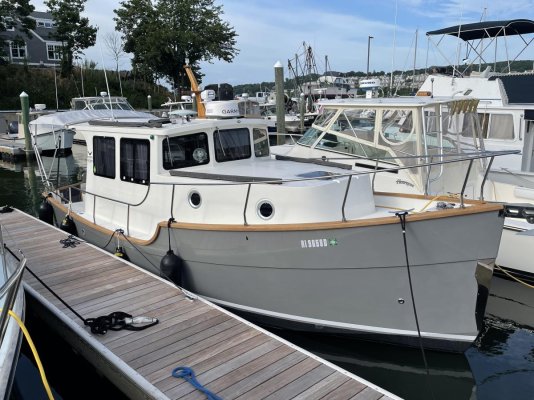stickan1
Newbie
As I am getting older I consider buying a trawler. After a period with hearth problems I bought a motor sailer, a Fisher 30, but I always tried to sail her and she was very under rigged so I got frustrated and sold her and bought a conventional sailing yacht, a Hanse 315. I have always been a sailor and raced a lot but now I enjoy most the quiet days at anchor together with my dog who doesn't like sailing so much. I live in Sweden and there are few trawlers for sale here, but I am prepared to buy from other parts of N Europe once the Covid is under control.
I have seen an ad for a North Aegean Trawler 30 in Germany and it is the right size. It is difficult to find much info about it. It was built in Turkey and a few went to the US and some ended up in Germany. I looks like the company only survived a couple of years, starting in 2015.
So my question is about this boat, if anyone of you have seen one or even better own one. I may consider other boats in the size range 30-32 feet, a tug style boat would be fine, but there are very few for sale in Europe. I don't like the Beneteau ST style.
I have seen an ad for a North Aegean Trawler 30 in Germany and it is the right size. It is difficult to find much info about it. It was built in Turkey and a few went to the US and some ended up in Germany. I looks like the company only survived a couple of years, starting in 2015.
So my question is about this boat, if anyone of you have seen one or even better own one. I may consider other boats in the size range 30-32 feet, a tug style boat would be fine, but there are very few for sale in Europe. I don't like the Beneteau ST style.


